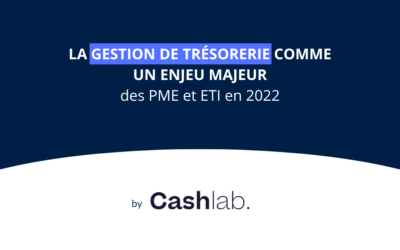Faced with new technologies (web3, metavers, crypto-currencies...), the finance function is facing a new challenge: the cohabitation of digital and traditional currencies. Although crypto-currencies are not new (they had their first crisis in early 2022), their use by companies is.
Crypto-currencies in business
We are going to analyse the place of crypto-assets in a company's treasury. But first, let's review what constitutes a crypto-currency.
Reminder: what are crypto-currencies?
Paradoxically, crypto-currency is not a "real" currency. Indeed, it does not meet the 3 criteria that constitute a currency :
- A medium of exchange: digital currencies are still marginal compared to the global money supply.
- A unit of account: which is not recognised everywhere for crypto-assets.
- A store of value: too volatile, crypto-currency is considered unstable.
Nevertheless, it corresponds to the definition of an asset according to "Article 211-1 of the General Accounting Plan (GAAP)" an identifiable item of property, plant and equipment that has a positive economic value for the entity, i.e. an item generating a resource that the entity controls as a result of past events and from which it expects future economic benefits’.
Crypto-currencies, otherwise known as crypto-assets, are stored in a digital wallet called a hardware wallet. Transactions are recorded and managed in a decentralised system: the blockchain.
When does a company have to deal with crypto-currencies?
Since the emergence and popularisation of crypto-currencies, companies are increasingly interested in this digital currency. We found 2 main reasons why companies have them in their treasury:
- Crypto-currency as a means of payment
Crypto-currencies are mainly used in the metaverse, a network of virtual worlds. But also in some online shops and platforms and, more rarely, in physical. Among the best known, we can mention Microsoft, Shopify, Tesla, Twitch, Playstation... - Crypto-currency as an investment
Despite the volatility of the crypto-currency market and the associated risks, some companies choose to invest in it to diversify their cash flow. Others see it as a way to protect themselves from inflationary trends, especially for companies that issue or receive payments from abroad.
How are crypto-currencies categorised in accounting?
How do you account for transactions with crypto-currencies in the accounting entry?
Where should cryptos appear on your balance sheet?
The classification in the accounting balance sheet depends on what you intend to do with these crypto-assets.
If they are assets that you intend to keep in your treasury, and therefore use them as means of payment:
You can qualify them in non-Cash and intangible assets : intangible assets.
If they are assets that you intend to resell, in the case of an investment:
You can list them in assets held for sale: inventories.
How do you convert crypto-currencies to euros on the balance sheet?
To convert the amount of crypto-currencies into euros, you have two solutions.
- Take the price on the day of the transaction as a reference
- Take the average of the exchange rates on the day of the conversion
The last thing you need to do is enter the transaction costs as an expense on your income statement. Be sure to keep the statements to support your transactions.
What tax regime are crypto-currencies subject to?
Crypto-currency transactions can be taxed provided you make a capital gain. That is, if you resell them at a higher price than you paid for them.
Crypto-currencies are subject to the “Prélèvement Forfaitaire Unique” (PFU). It corresponds to a flat tax of 30% in the case of occasional sales. In the case of mining, the profits will be taxed as non-commercial profits. And in the case of regular sales, the profits will be taxed under the Industrial and Commercial Profits regime.
Crypto-currencies in business: the conclusion
It is important to be informed and to take into account the uncertainty that crypto-currencies represent. The volatility of the market makes investing in crypto assets risky. Nonetheless, payment in cryptos is becoming more and more popular, both in the virtual and in the real world. It encourages companies to have them in their treasury: whether to pay suppliers or to be paid by customers. This trend has become more pronounced with the metaverse and the Web3, where the only accepted currency is digital currency.
Article rédigé par Eléonore Berne, le 18/10/2022.
The impact of the war in Ukraine on Cash management
Benjamin Madjar looks back at the war in Ukraine and the new cash management challenges facing companies.
What are the financing needs in 2022 according to Sophie Susterac?
Sophie Susterac looks back on the last two years, marked by the crisis and corporate debt, and gives some insight into short-term financing needs in 2022.
Cash management as a major challenge for SMEs and SMIs in 2022
Mid & Large Caps have been particularly vulnerable to the economic downturn and its implications (longer payment periods etc.).
![]()
📍1, rue des Prouvaires
75001 Paris
Follow us:
©2023 All rights reserved. | Cashlab | Legal Notice




